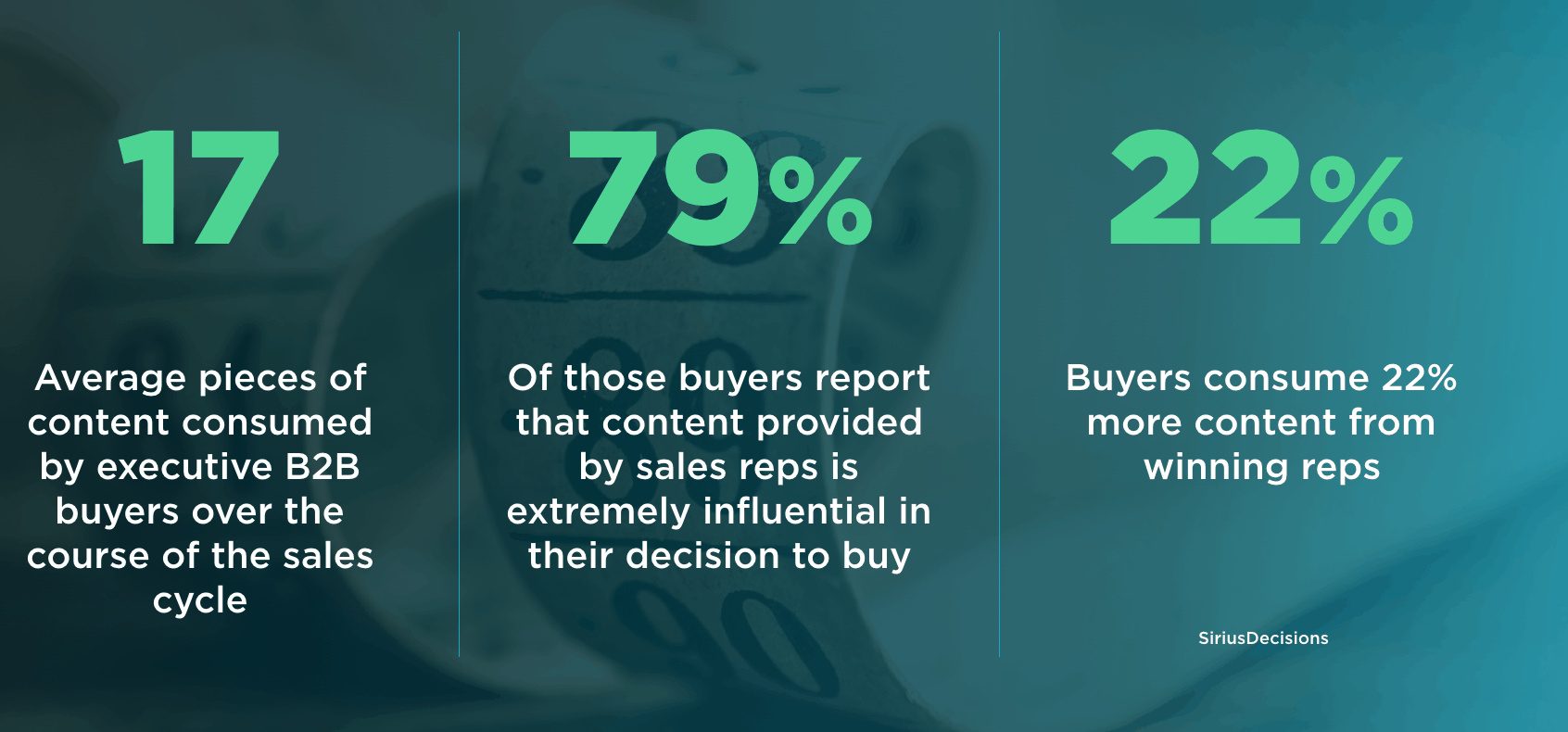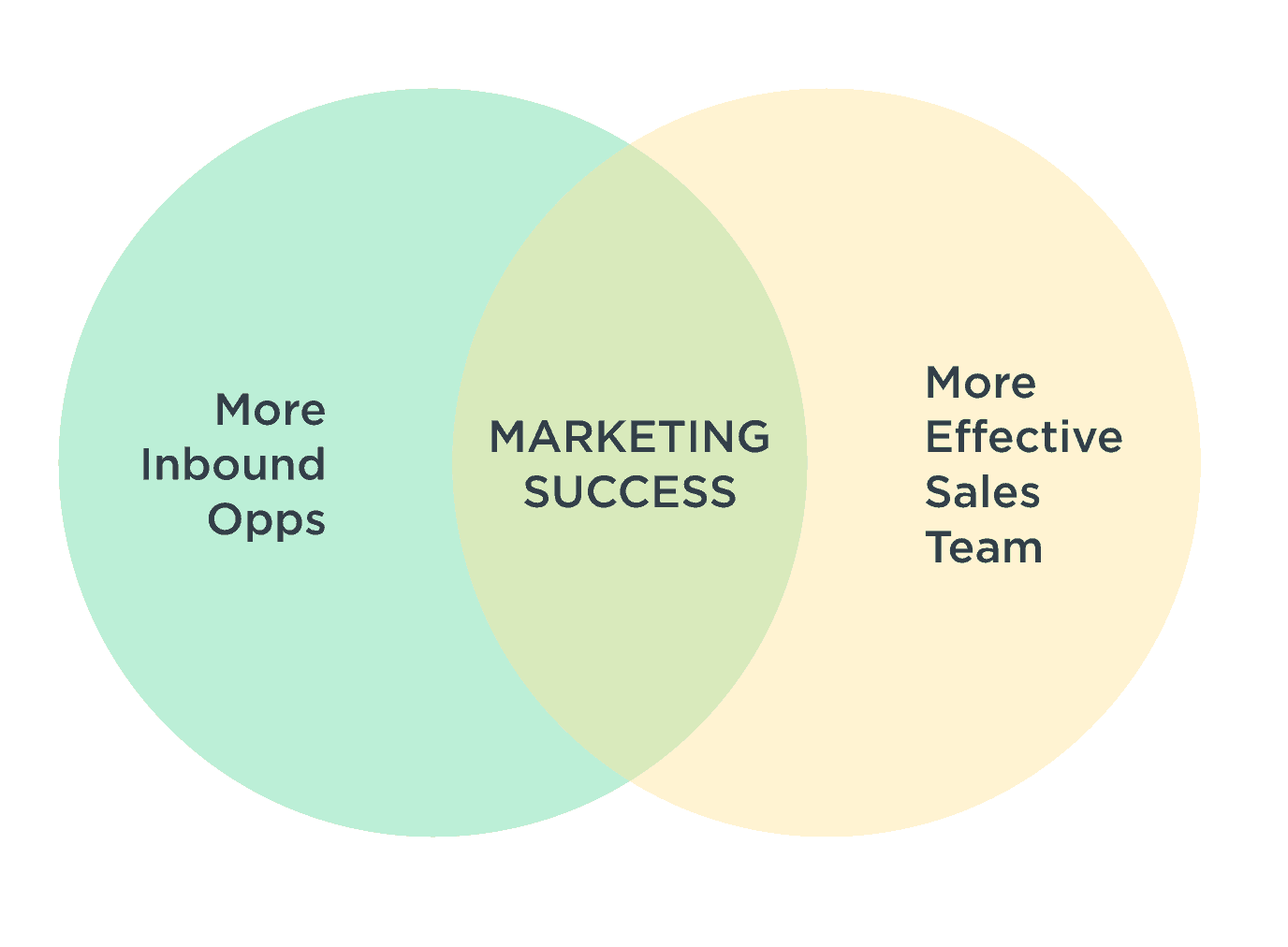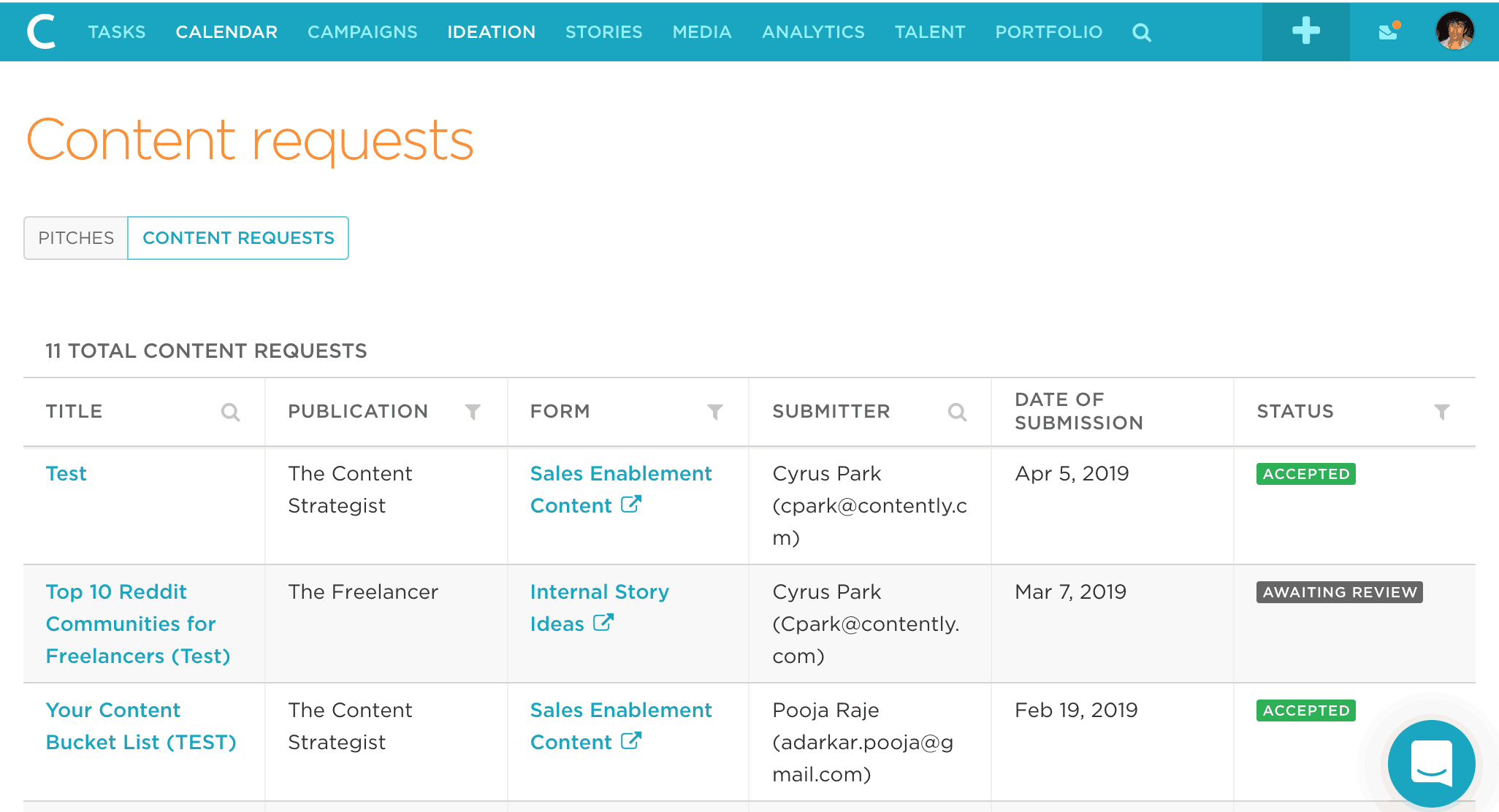Ask a Content Strategist
Ask a Content Strategist: How Can Sales Enablement Drive Content Marketing ROI?
Are there any new ways to drive content marketing ROI we should be thinking about?
-Sara, New York
This question cuts deep.
In March, I took on a new role as Contently’s head of marketing. I immediately started thinking about I could make a big impact as quickly as possible.
My first instinct was to pump more inbound opportunities into the pipeline. The more opportunities you have, the more business you’ll close, right? So, I worked with my team to ramp up our content marketing machine and push out lead-gen campaigns that would appeal to our target audience.
But then I thought of a second, bigger opportunity. What if we could also make our sales team more effective? If you think about it, sales enablement is the easiest way to drive marketing ROI. Let’s do the math.

Say you’re a B2B software company, and you close 15 percent of all inbound opportunities. That means if you have a goal of closing 15 deals a quarter, you need to generate 100 opportunities.
But say your company needs to close 20 deals next quarter to hit its target. With that 15 percent opp-to-win rate, you’re now going to have to generate 133 opportunities to close enough deals.
| Opportunities | Opp-to-Win Rate | Deals Closed |
| 100 | 0.15 | 15 |
| 133 | 0.15 | 20 |
That’s not easy to do with a flat budget. Sure, you can make some badass content your audience loves and increase your inbound leads, but a lot of those leads will need to be nurtured for months to become opportunities.
What if you just increased your opp-to-win rate instead?
Most marketers recoil at the idea of being on the hook for sales goals. As a result, sales enablement is often an afterthought. Some companies just leave salespeople to figure it out on their own. Here’s the truth: The average B2B executive buyer consumes 17 pieces of content over the course of the sales cycle, according to Sirius Decisions. Two-thirds of that content is delivered directly to buyers from your sales team.
When it comes to content distribution, social networks and email platforms get a lot of love. However, your most valuable distribution channel is actually your sales team. Seventy-nine percent of B2B buyers say that content provided by sellers is extremely influential in their buying decision.

When we don’t put the right content in the hands of their sales team at the right time, we waste the opportunities we worked so hard to generate. On the flip side, if you can help your sales team close just five percent more deals, you’ll completely transform the trajectory of your business.
| Opportunities | Opp-to-Win Rate | Deals Closed |
| 100 | 0.15 | 15 |
| 100 | 0.20 | 20 |
So how do you do this? I’d suggest starting with a 3-step process:
1. Set a marketing goal for improving opp-to-win rate.
You won’t get credit for driving sales enablement ROI if you put it on the record. Pick a target that’s ambitious yet realistic. (We’re shooting for a 50 percent boost by year’s end.) And make sure everyone in the company knows about the goal.
While, you’re at it though, keep focusing on increasing demand gen. The Venn diagram between increased inbound opportunities and increased sales effectiveness is where true marketing success lies. Don’t believe me? Then tell this actual Venn diagram that he isn’t real. I dare you.
 2. Get close with sales and find out what they need.
2. Get close with sales and find out what they need.
To develop effective sales enablement collateral, you need an intimate knowledge of your sales cycle: How your team qualifies and nurtures opps, how they pitch, what common objections and challenges they face, who the decision makers are, and the reasons they say yes or no.
Shadow your sellers. Learn how they work. Naturally, you’ll start to see a lot of opportunities to help them out.
First, you’ll spot situations where sellers could use existing content but don’t know it exists or where to find it.
Second, you’ll see certain conversations stall because you lack a crucial piece of content. If we’d done a couple more case studies on our healthcare clients last year, for instance, I bet we would have closed five more deals. If we’d made a better ROI calculator? Ten deals, easy.
Solicit these needs from your sellers. We use the content requests feature on Contently’s platform to organize and respond to ideas from our sales team. That kind of technology is really useful and helps marketing and sales feel like a cohesive team. If you don’t have software like this, you can always use Google Forms.

According to CSO Insights, sales teams only receive 34 percent of the content they need from marketing teams. If you take an honest look at your content program, I bet you’ll see a lot more you can do to help.
In our case, we’ve realized our sales enablement needs fall into a few buckets:
- Content and case studies that speak to key buyer concerns
- Training on the latest marketing trends and models that let sellers be more consultative
- Tools and calculators that help them develop more customized proposals.
3. Make sure your sellers can find the right content
Oh boy, do I have more sales enablement stats for you. Did you know that on average, salespeople need to look in six different places to find the content they need? Or that, according to SiriusDecisions, 66 percent of companies with a sales enablement process are on track to hit their goals compared to only 48 percent for those that don’t? I bet you didn’t, because you have a life, unlike me, who is writing this column while on a plane to Hawaii for my friend’s wedding.

Another study found that sales people will stop looking for content after 90 seconds if they can’t find it. So you need a really good system in place.
To build that system, we created a feature in Contently called content portals that makes all of our content easily searchable by asset type, audience persona, funnel stage, industry, etc. for anyone in the company. Our clients love it because any employee can use it—even if they don’t have a Contently login.
This past week, we took that to the next level with the launch of an official app in the SalesForce AppExchange that recommends custom content to sellers at the opportunity level. Now they can easily send helpful, relevant content to prospects, instead of sending another empty “Hey, just following up…” email.

This is an area where tech really matters. You need a system that’ll help your sales people find the right content, and it should use the same tagging structure as the rest of your content management program.
How do you convince your boss to prioritize storytelling over SEO-driven content that’s basically just adding to the noise and has already been covered by everyone? On my team, we can only create content around a certain topic if it has significant search volume behind it. In theory, this strategy sounds great, but the majority of our posts end up being explainers of dry topics or how-tos on really boring tasks. We don’t write anything that actually resonates with people anymore, like opinionated pieces, analysis, or strategy. It’s honestly soul-sucking.
-Clifford, Boston
I feel for you, Clifford.
It sounds like your boss is stuck in a 2008 SEO mindset, so I’d challenge you to show your boss where this strategy is falling short. Some things to examine:
- How well is this content ranking for the keywords you’re targeting? It doesn’t matter is a keyword has a high Monthly Search Volume if no one’s engaging with it and it’s not ranking well.
- How engaged are folks when they come from search, past just pageviews? What’s their bounce rate? Session duration? Pages per session? Scroll depth? Learn your Google Analytics inside-out so that you can give your boss the full picture.
- Are the visitors from search taking action? Are they signing up for a newsletter, viewing a product page, downloading an e-book, or taking any other sort of significant action? Set up conversion goals to track these pathways. (Here’s a great guide).
It’s not enough to just tell your boss that your content strategy sucks. You have to explain why.
Joe Lazauskas is Contently’s head of marketing and co-author of The Storytelling Edge. Ask him your most pressing content strategy questions here or email him at lazer@contently.com.
Get better at your job right now.
Read our monthly newsletter to master content marketing. It’s made for marketers, creators, and everyone in between.




